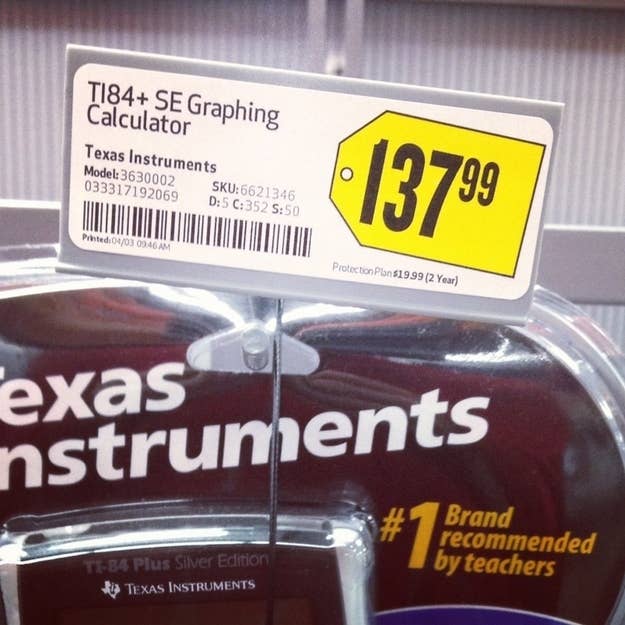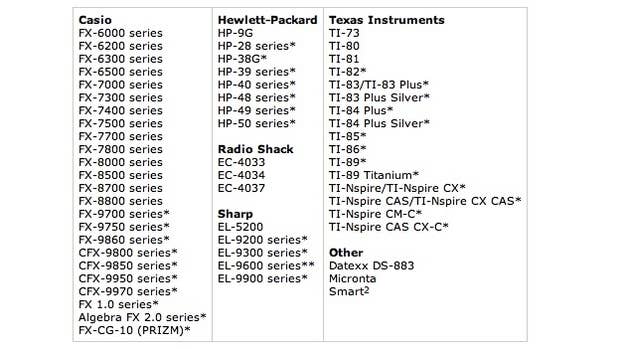
There was a time when my TI-83 was the coolest piece of electronics I owned. I was between game consoles and my portable music machine was a generic DiscMan knockoff, so I suppose there wasn't much competition, but my TI had games — that helicopter one, oh man — and a drawing app for doodling stick figures, bad words, boobs, butts and dicks. (Also it could help me do math, I guess.) Middle school!
I remember my parents balking at the TI-83's price, which was somewhere north of $100 at the turn of the millennium, in part because it was so high and in larger part because it felt compulsory. If my parents wanted their son to keep advancing in school, to eventually become a functioning adult non-hobo, they needed to buy him this expensive gadget. Purchasing a TI-83 was to them like paying a tax, or buying insurance.
Wandering through a Best Buy this weekend, I noticed a rack of graphing calculators. My 83 wasn't there, though it's still listed online for $105. There were probably a dozen different options, some from TI and some from Casio and others, but the ones given the most prominent placement were the TI-84 and TI-89, their prices apparently unchanged in the last 10 years.
Within sight of the rack was the store's Apple display, ornamented with iPads, MacBooks and iPod Touches. The iPod Touch is now retailing for $200, or $62 more than the TI-84. The TI-84 has a 15MHz processor, 1.5MB of storage space, a 96x64 monochrome screen, and no built-in battery. The iPod Touch has a 960x640 full-color touchscreen, an 800MHz processor, 8GB minimum storage, Wi-Fi, two cameras, a speaker and a full mobile operating system with hundreds of thousands of apps. The only ways in which these devices are even in the same category are that they both use electricity and they can both do math; the App Store has plenty of fully capable graphing calculator apps available for a few bucks, tops.
I reached out to TI for comment and haven't yet heard back, but I think the reason for this is pretty clear: standardization. CollegeBoard, the company that administers the SAT and AP exams, has strict calculator policies. For its AP exams, it only allows certain machines:

And, perhaps more importantly, it has a proscriptive policy about using cellphones or other app-based gadgets, including on the SAT.

The practical reason for this is that it levels the playing field somewhat, and prevents students from cheating by accessing other apps, the internet, or each other. Fair enough! The same logic is what drives many teachers to make their students buy one particular calculator, as well as the desire to have everyone in the class using the same machine. Learning how to use these things is nearly as hard as the math your using them to do. Having everyone on a different calculator would be a teaching and IT nightmare.
What this has done for TI, as The Atlantic recently noted, is create an unassailable position. It's easily conceivable that TI-84 and iPod Touch prices could meet at $150 in the near future, and there's no defensible excuse for that. One machine is thousands of times more capable than the other.
Yet students are effectively forced to buy these products, and TI is discouraged from innovating in any real way. The calculator industry is not unlike the textbook industry: normal economics do not apply here. Students — or really, parents — are stuck with these things, and their prices, until CollegeBoard and teachers either figure out how to trust their students to use multi-purpose devices or TI brings its prices down. But why would they do that? This is easy money.
